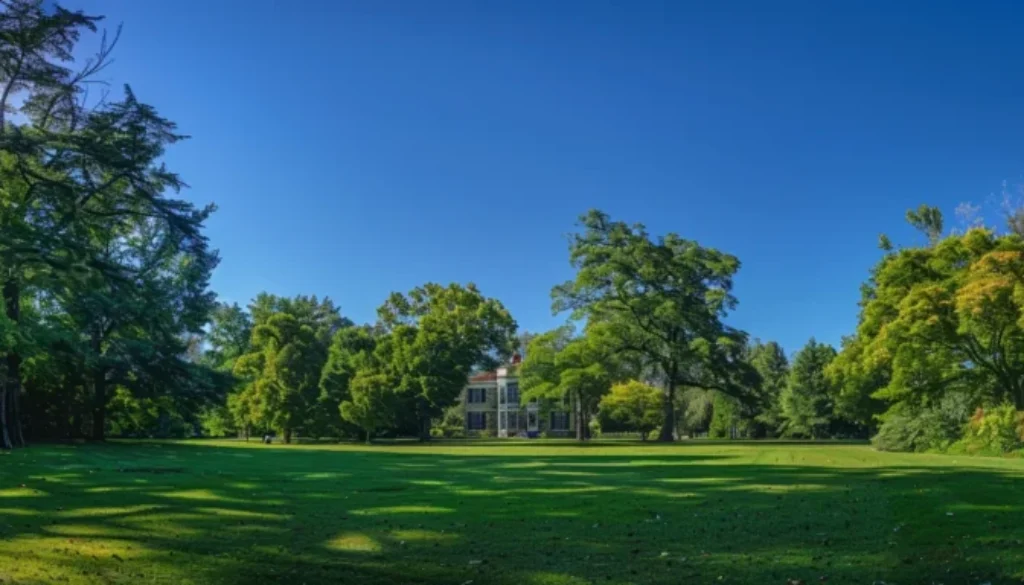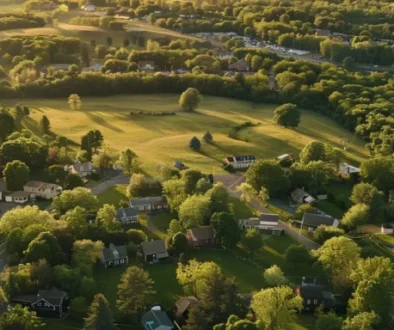Litchfield, CT: A Journey Through Historic Landmarks
Are you planning a trip to Litchfield, CT and wondering what historic sites to visit? This guide takes you through six must-see landmarks that showcase the town’s rich heritage. From the Historical Society Museum to the Topsmead State Forest Mansion, you’ll discover the stories behind Litchfield’s most significant structures. Learn about the town’s role in early American education, explore its natural beauty, and experience the charm of its historic downtown. By the end of this journey, you’ll have a deeper appreciation for Litchfield’s place in New England history and the services that have preserved these landmarks for generations.
Learn About Litchfield's Past at the Historical Society Museum

The Litchfield Historical Society Museum offers visitors a comprehensive look at the town’s rich history. Guests can explore Litchfield’s founding, view colonial artifacts, and participate in educational workshops. The museum’s Interactive Learning Gallery provides engaging experiences for children, making it an ideal destination for families interested in New England history. Located near Wigwam Creek, the museum showcases the town’s evolution from a colonial settlement to a modern community.
Understand Litchfield's Founding and Early History
The Litchfield Historical Society Museum provides visitors with a comprehensive understanding of the town’s founding and early history. As the county seat of Litchfield County, nestled in the picturesque Litchfield Hills, the museum showcases the area’s evolution from a colonial settlement to a thriving community. Exhibits highlight the town’s role in the American Revolution and its development as a center for law education, while also touching on the region’s agricultural heritage and the emergence of local craft beer traditions.
View Colonial Artifacts and Historical Documents
The Litchfield Historical Society Museum houses an impressive collection of colonial artifacts and historical documents that offer visitors a glimpse into Connecticut’s past. Visitors can examine items from Plymouth and other early New England settlements, shedding light on daily life in colonial times. The museum also features documents related to George Washington’s visits to the village, providing context for Litchfield’s role in shaping American history.
Participate in Interactive Educational Workshops
The Litchfield Historical Society Museum offers interactive educational workshops that bring the town’s history to life. These workshops, held on Mondays and throughout the week, cover topics ranging from colonial life to the impact of Litchfield businesses on the United States economy. Participants can explore the connections between Litchfield and nearby towns like Kent, and learn about influential institutions such as the Forman School, which has played a significant role in the area’s educational legacy.
Bring Children to the Interactive Learning Gallery
The Litchfield Historical Society Museum’s Interactive Learning Gallery offers children an engaging way to explore local history. Young visitors can participate in hands-on activities that bring Litchfield’s past to life, complementing the educational experiences provided by the White Memorial Conservation Center. The museum’s website provides information on upcoming events and fundraising initiatives, ensuring families can plan their visits to coincide with special programs designed for children.
Visit the Iconic Tapping Reeve House and Law School

The Tapping Reeve House and Law School, America’s first law school, offers visitors a unique glimpse into early legal education. Guests can explore the 18th-century residence, learn about Tapping Reeve’s impact on jurisprudence, and examine exhibits on early American law. The White Memorial Foundation provides additional context for understanding Litchfield’s rich history through upcoming events and storytelling.
Uncover the Legacy of America's First Law School
The Tapping Reeve House and Law School stands as a testament to America’s legal education history. Established in 1784, this institution pioneered formal law training in the United States, shaping the nation’s legal landscape. Visitors can explore the original schoolhouse and Reeve’s residence, gaining insight into early American jurisprudence and the methods used to educate future lawyers.
Walk Through the Historic 18th-Century Residence
Visitors to the Tapping Reeve House can step back in time as they explore the well-preserved 18th-century residence. The house, which served as both Reeve’s home and the initial location for his law lectures, offers a glimpse into colonial-era domestic life and early educational practices. Guided tours provide insights into the daily routines of Reeve and his students, showcasing period furnishings and architectural features that reflect the social and cultural norms of early American society.
Understand Tapping Reeve's Impact on Legal Education
Tapping Reeve revolutionized legal education in America by introducing a structured curriculum and teaching methods that went beyond the traditional apprenticeship model. His innovative approach included lectures, moot courts, and examinations, which set a new standard for law schools across the nation. Reeve’s impact extended beyond Litchfield, as many of his students went on to become prominent lawyers, judges, and political leaders, shaping the legal landscape of the young United States.
Examine Exhibits on Early American Jurisprudence
The Tapping Reeve House and Law School offers exhibits that provide insights into early American jurisprudence. Visitors can examine historical legal documents, textbooks, and court records that illustrate the development of American law in the late 18th and early 19th centuries. These exhibits highlight the evolution of legal principles and practices that shaped the nation’s judicial system, offering a unique perspective on the foundations of American law.
Enjoy Nature at White Memorial Conservation Center

The White Memorial Conservation Center offers visitors a chance to explore Litchfield’s natural beauty. With scenic hiking trails, interactive exhibits at the Nature Museum, outdoor educational activities, and diverse bird habitats, the center provides a comprehensive nature experience. Visitors can immerse themselves in local ecosystems while learning about conservation efforts in the area.
Hike Scenic Trails Amidst Litchfield's Ecosystems
The White Memorial Conservation Center offers visitors an opportunity to explore Litchfield’s diverse ecosystems through its extensive network of scenic trails. These well-maintained paths wind through forests, wetlands, and meadows, providing hikers with a chance to observe local flora and fauna in their natural habitats. Visitors can choose from trails of varying difficulty levels, making the center accessible to both casual nature enthusiasts and experienced hikers seeking a more challenging experience.
Enjoy Interactive Exhibits at the Nature Museum
The Nature Museum at White Memorial Conservation Center offers interactive exhibits that engage visitors with Litchfield’s local ecosystems. Guests can explore hands-on displays showcasing the area’s wildlife, geology, and natural history. The museum’s educational programs provide in-depth insights into conservation efforts and environmental stewardship, making it an ideal destination for nature enthusiasts and families alike.
Participate in Outdoor Educational Activities
The White Memorial Conservation Center offers a variety of outdoor educational activities that engage visitors with Litchfield’s natural environment. Participants can join guided nature walks, wildlife observation sessions, and hands-on workshops focused on local ecology. These programs, led by experienced naturalists, provide valuable insights into conservation practices and foster a deeper appreciation for the region’s biodiversity.
Observe Various Bird Species in Diverse Habitats
The White Memorial Conservation Center offers birdwatchers a diverse array of habitats to observe various avian species. From wetlands to forests, visitors can spot both resident and migratory birds throughout the year. The center provides guided bird walks and educational programs to help enthusiasts identify different species and learn about their ecological roles in Litchfield’s ecosystems.
Stroll Through the Historic Downtown Litchfield

Historic Downtown Litchfield offers visitors a glimpse into Connecticut’s colonial past. Strolling through the area, visitors can admire well-preserved architecture, shop and dine in charming establishments, browse local art galleries, and learn about the town’s role in the Revolutionary War. This walkable district showcases Litchfield’s rich heritage and vibrant community.
Admire Well-Preserved Colonial Architecture and Sites
Litchfield’s historic downtown showcases well-preserved colonial architecture, offering visitors a glimpse into the town’s rich past. Stately homes, many dating back to the 18th century, line the streets, displaying classic New England features such as clapboard siding, symmetrical facades, and intricate woodwork. Notable sites include the Sheldon Tavern, a former stagecoach stop, and the United States Hotel, both exemplifying the town’s architectural heritage.
Shop and Dine in Charming Local Establishments
Downtown Litchfield offers visitors a diverse array of charming local shops and eateries. Visitors can explore unique boutiques offering handcrafted goods, antiques, and locally-made products. The town’s restaurants serve a variety of cuisines, from traditional New England fare to contemporary dishes, often featuring ingredients sourced from nearby farms.
Browse Art Galleries Showcasing Local Artists' Work
Downtown Litchfield features several art galleries that showcase the work of local artists. Visitors can explore exhibits displaying paintings, sculptures, and mixed media pieces that reflect the region’s natural beauty and cultural heritage. These galleries often host special events and artist meet-and-greets, providing opportunities for art enthusiasts to engage with creators and learn about their artistic processes.
Learn About Downtown's Role in the Revolutionary War
Downtown Litchfield played a significant role during the Revolutionary War, serving as a supply depot and strategic location for Continental forces. Visitors can explore historical markers and buildings that highlight the town’s contributions, including the Oliver Wolcott House, home of a signer of the Declaration of Independence. The Litchfield Historical Society offers guided tours that provide in-depth information about the town’s Revolutionary War history, allowing visitors to gain a deeper understanding of Litchfield’s importance during this pivotal period in American history.
Tour the Stunning Topsmead State Forest Mansion

Topsmead State Forest Mansion offers visitors a glimpse into Litchfield’s elegant past. The English Tudor-style summer estate features scenic trails, picturesque meadows, and manicured gardens. Guests can tour the mansion, enjoy outdoor activities, and attend seasonal events. This historic landmark provides a unique blend of architectural beauty and natural surroundings for visitors to explore.
Visit the English Tudor-Style Summer Estate
Topsmead State Forest Mansion offers visitors a unique opportunity to explore an exquisite English Tudor-style summer estate. Built in the 1920s by Edith Morton Chase, the mansion showcases period-appropriate furnishings and architectural details that transport guests to a bygone era. Guided tours provide insights into the estate’s history and the life of its original owner, allowing visitors to appreciate the craftsmanship and design that went into creating this Litchfield landmark.
Enjoy Scenic Trails Surrounding the Mansion Grounds
Topsmead State Forest Mansion offers visitors a network of scenic trails that wind through the estate’s lush grounds. These well-maintained paths provide opportunities for leisurely walks, birdwatching, and enjoying the diverse flora and fauna of Litchfield’s natural landscape. Visitors can explore meadows, woodlands, and gardens, experiencing the changing seasons and the tranquil beauty that surrounds this historic mansion.
Picnic in the Picturesque Meadows and Gardens
Topsmead State Forest Mansion invites visitors to enjoy picturesque meadows and manicured gardens for picnicking. The estate’s grounds offer serene spots where guests can relax and savor a meal amid the beauty of Litchfield’s landscape. Visitors often bring blankets and baskets to settle in the lush grass, surrounded by colorful flowers and the gentle sounds of nature.
Attend Seasonal Events and Guided Mansion Tours
Topsmead State Forest Mansion offers guided tours and seasonal events that provide visitors with an in-depth look at the estate’s history and architecture. Knowledgeable guides lead tours through the mansion, sharing stories about Edith Morton Chase and the property’s significance to Litchfield. The estate hosts special events throughout the year, including holiday-themed tours, nature walks, and educational programs that highlight the mansion’s unique features and surrounding landscape.
Step Inside the Historic Litchfield Courthouse and Jail

The Historic Litchfield Courthouse and Jail offer visitors a glimpse into the town’s legal past. Guests can explore the 1812 Courthouse’s historic courtroom, learn about notable trials, and appreciate the unique architecture of the old jail. These landmarks provide insight into the evolution of Litchfield’s justice system, showcasing the town’s rich legal heritage.
Visit the 1812 Courthouse's Historic Courtroom
The 1812 Courthouse in Litchfield offers visitors a unique opportunity to step back in time and experience a pivotal piece of Connecticut’s legal history. The historic courtroom, preserved in its original state, showcases the architectural style and judicial practices of the early 19th century. Visitors can observe the judge’s bench, jury box, and spectator seating, gaining insight into how trials were conducted over two centuries ago.
Learn About Notable Trials and Legal History
The Historic Litchfield Courthouse and Jail offer visitors insights into notable trials and legal proceedings that shaped the town’s history. Guests can learn about significant cases that took place within these walls, including those related to the Revolutionary War era and early American jurisprudence. The courthouse’s exhibits highlight the evolution of Connecticut’s legal system and Litchfield’s role in developing legal education through its connection to the Tapping Reeve Law School.
Appreciate the Unique Architecture of the Old Jail
The old jail in Litchfield showcases unique architectural features that reflect its historical purpose and the era of its construction. Visitors can observe the thick stone walls, narrow windows, and heavy iron doors that were designed to ensure the secure confinement of inmates. The building’s layout, including its small cells and central guard area, provides insights into 19th-century incarceration practices and the evolution of correctional facilities in Connecticut.
Understand the Evolution of Litchfield's Justice System
The Historic Litchfield Courthouse and Jail offer visitors a comprehensive view of how the town’s justice system evolved over time. From its early colonial roots to modern-day practices, the exhibits and guided tours highlight key changes in legal procedures, punishments, and social attitudes towards crime. Visitors can trace the development of Litchfield’s legal institutions, including the establishment of the county court system and the impact of constitutional amendments on local justice administration.



